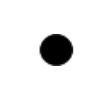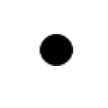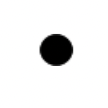Unit 3 FRQ (Circular Motion & Gravitation)
3 min read•june 18, 2024
AP Physics 1 🎡
257 resourcesSee Units
AP Physics 1 Free Response Question for Circular Motion and Gravitation
👋 Welcome to the AP Physics 1 Unit 3 FRQ (Circular Motion & Gravitation). These are longer questions, so grab some paper and a pencil, or open up a blank page on your computer. After you finish, you can see how you did with Unit 3 FRQ (Circular Motion & Gravitation) Answers.
⏱ The AP Physics 1 exam has 5 free-response questions, and you will be given 90 minutes to complete the FRQ section. (This means you should give yourself ~18 minutes to go through each practice FRQ.)
- 🤔 Need a quick refresher of the unit as a whole? Check out the Unit 3 Overview.
- 😩 Getting stumped halfway through answering? Look through all of the available Unit 3 Resources.
Learning Objectives and Science Practices
- 3.B.1.2 Design a plan to collect and analyze data for motion (static, constant, or accelerating) from force measurements, and carry out an analysis to determine the relationship between the net force and the vector sum of the individual forces. [SP 4.2, 5.1]
- 3.B.1.3 Re-express a free-body diagram representation into a mathematical representation, and solve the mathematical representation for the acceleration of the object. [SP1.5, 2.2]
- 3.B.2.1 Create and use free-body diagrams to analyze physical situations to solve problems with motion qualitatively and quantitatively. [SP 1.1, 1.4, 2.2]
- 3.A.1.1 Express the motion of an object using narrative, mathematical, and graphical representations. [SP 1.5, 2.1, 2.2]
- 3.A.2.1 Represent forces in diagrams or mathematically, using appropriately labeled vectors with magnitude, direction, and units during the analysis of a situation. [SP 1.1]
Setup

A portion of a rollercoaster is shown above. At point a, the track has a radius of approximately 3.0 m and the cart has a speed of 2.2 m/s. The mass of the rider is approximately 60 kg. We will be ignoring the mass of the car.
Questions
Part A
(i) Without manipulating equations, state whether the rider feels lighter, heavier, or the same as they normally would while standing still on earth. Briefly explain your reasoning.
(ii) On the dot below, draw and label a free body diagram for the rider at point a.

(iii) How heavy would a 60 kg passenger feel at point a (what is their apparent weight)? Make sure you show ALL work!
Part B
At point b, the track has a radius of 13 m and the rider feels four times heavier than normal.
(i) Without manipulating equations, state whether the rider is moving faster, slower, or the same speed at point b as they were at point a. Briefly explain your reasoning.
(ii) On the dot below, draw a free body diagram for the rider.

(iii) How fast is the rider traveling at point b? Make sure to show all your work.
Part C
At point c, the track and cart exert a force of 400 N on the 60 kg rider. Their velocity is 7.0 m/s.
(i) On the dot below, draw a free-body diagram for the rider at point c.

(ii) Determine the radius of the track at point c. Make sure to show all work.
Answers & Rubric
💯 Ready to see how you did? Take a look at the Unit 3 FRQ (Circular Motion & Gravitation) Answers.
Browse Study Guides By Unit
👟Unit 1 – Kinematics
🌀Unit 2 – Dynamics
🚀Unit 3 – Circular Motion & Gravitation
⚡️Unit 4 – Energy
⛳️Unit 5 – Momentum
🎸Unit 6 – Simple Harmonic Motion
🎡Unit 7 – Torque & Rotational Motion
💡Unit 8 – Electric Charges & Electric Force
🔋Unit 9 – DC Circuits
🔊Unit 10 – Mechanical Waves & Sound
📚Study Tools
🧐Exam Skills

Fiveable
Resources
© 2025 Fiveable Inc. All rights reserved.